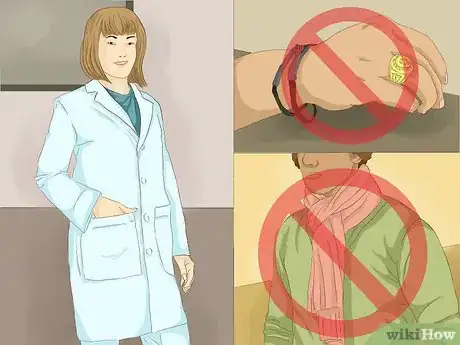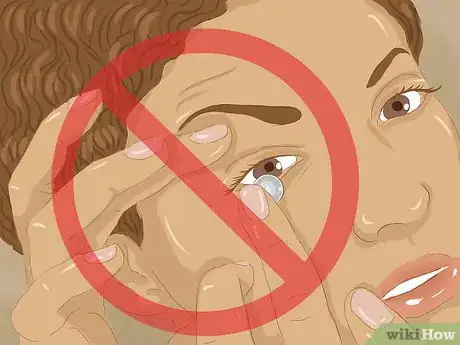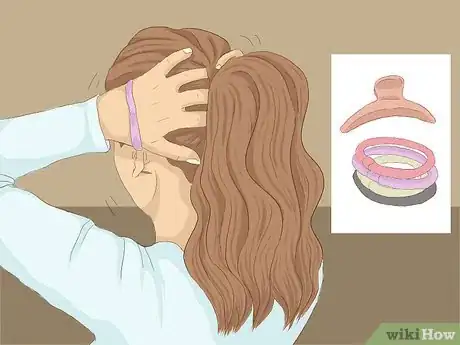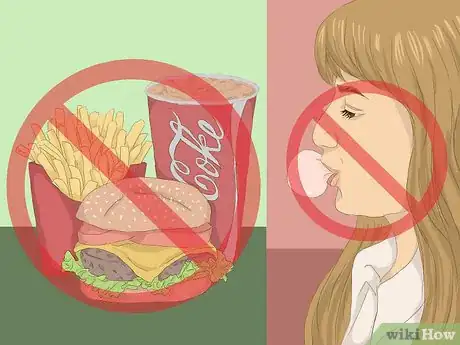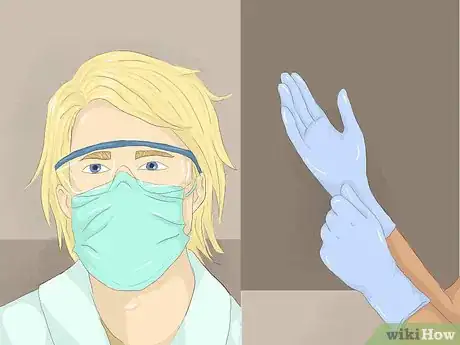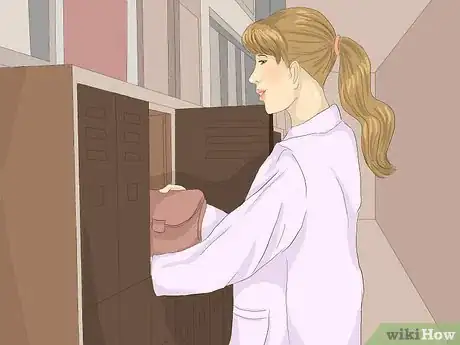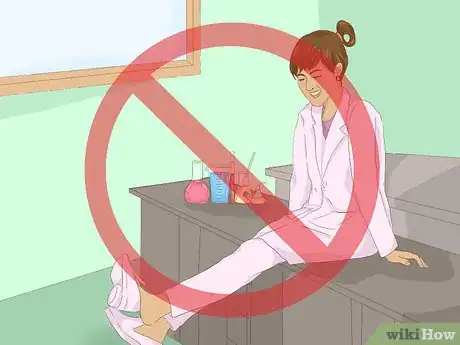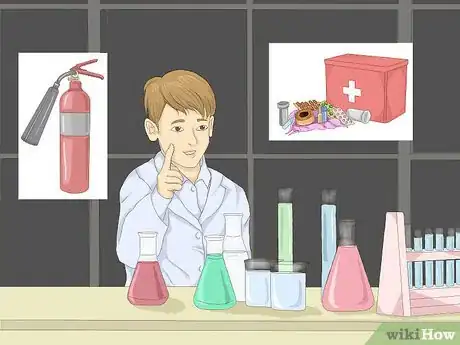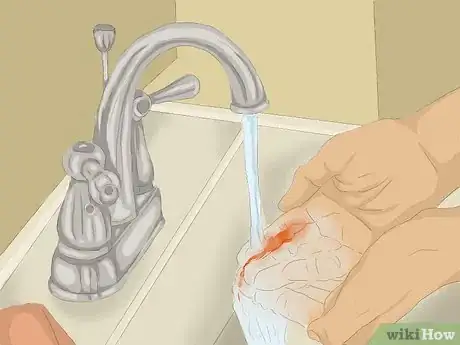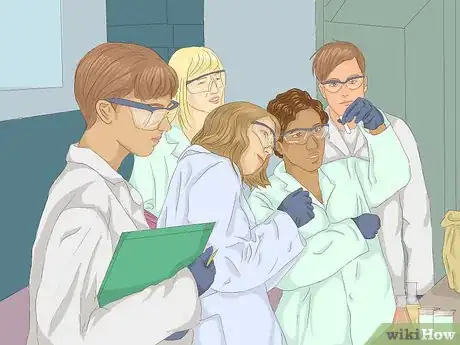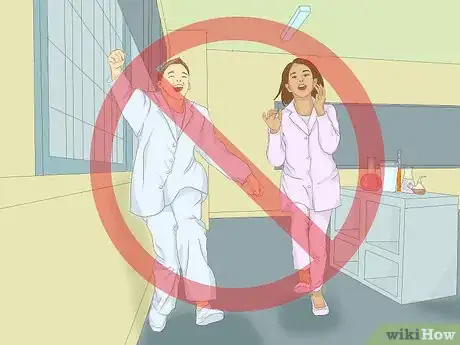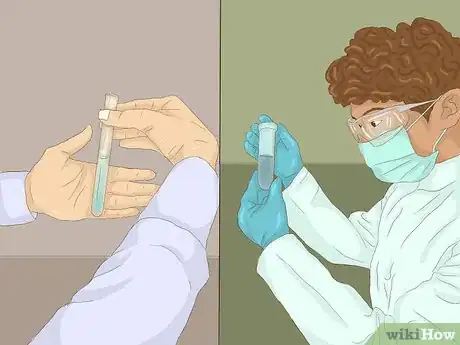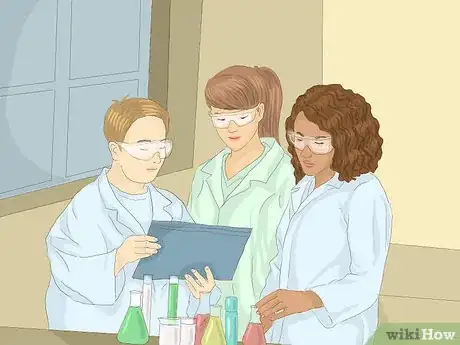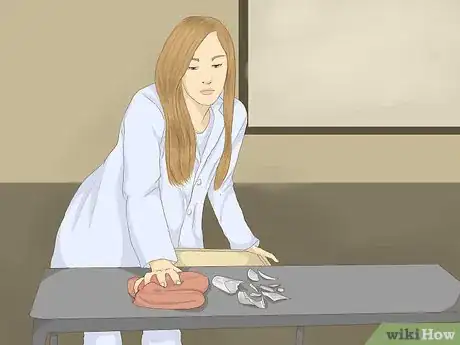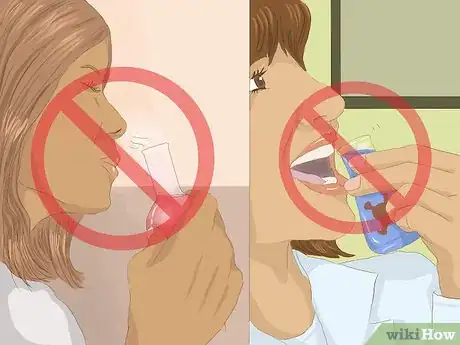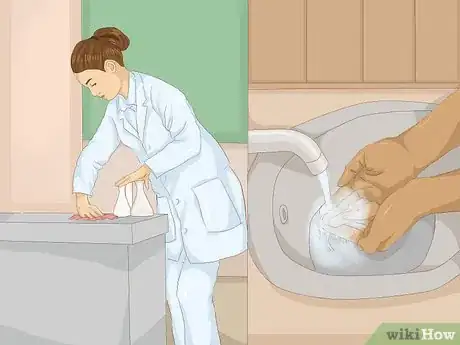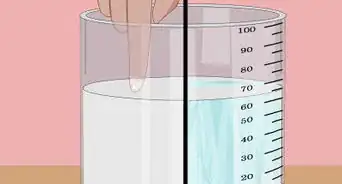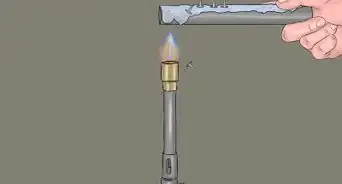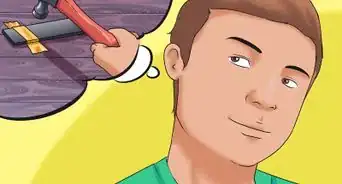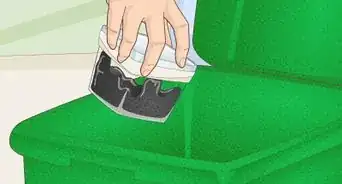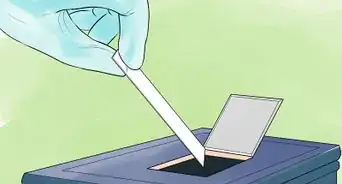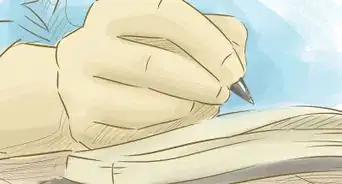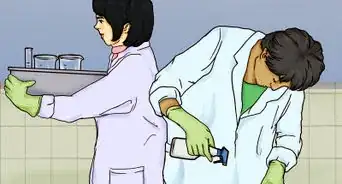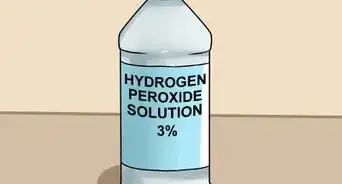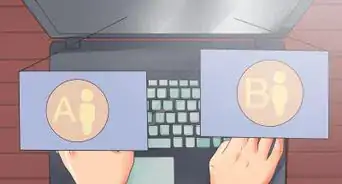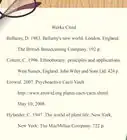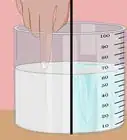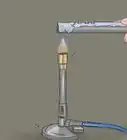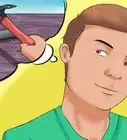This article was co-authored by Bess Ruff, MA. Bess Ruff is a Geography PhD student at Florida State University. She received her MA in Environmental Science and Management from the University of California, Santa Barbara in 2016. She has conducted survey work for marine spatial planning projects in the Caribbean and provided research support as a graduate fellow for the Sustainable Fisheries Group.
This article has been viewed 16,910 times.
Working in a lab can be an exciting and fun experience. However, there are several rules that you should follow in order to stay safe in a science lab. By preparing for the lab, understanding the lab environment, and handling the materials with care, you can ensure that you have a safe and fun lab experience.
Steps
Preparing for Lab
-
1Wear appropriate clothing. Before going to lab, make sure that you are dressed appropriately. Wear long pants and closed toe shoes. Avoid wearing clothing that hangs loosely around your body.[1]
- Avoid wearing anything that is a fire hazard such as synthetic materials or hairspray.
- Avoid loose clothing like cardigans or scarves.
- Remove dangling jewelry.
-
2Avoid wearing contact lenses. Many experiments involve chemicals that can get trapped behind or inside your contact lenses. In order to avoid damage to your eyes, choose to wear your glasses instead of contacts.[2]Advertisement
-
3Secure your hair. If you have a medium or long hairstyle, you should secure your hair in a ponytail or clip before your lab begins. Long hair could catch on fire, dangle in chemicals, or get caught in lab equipment.[3]
- Keep a ponytail holder or hair clip in your bookbag in case you forget to secure your hair before arriving at the lab.
-
4Leave your food and drink at the door. Food, drink, and chewing gum are not welcome in the lab. You should also avoid bringing any food preparation or eating utensils into the lab. You do not want to introduce any chemical or hazardous material to your body.[4]
-
5Wear protective gear. Be sure to wear any protective gear, such as aprons, goggles, and gloves, that is recommended for the experiment. Many chemicals, including their fumes, could damage your eyes or skin if they come in contact with each other. Other experiments require proper equipment to protect your body from fire or heat.
- Fireproof aprons, heat gloves, and face covers will be available when appropriate.
Understanding the Lab Environment
-
1Keep walkways clear. Make sure that all backpacks, books, and purses are out of the walkways of the lab. Consider putting them under the table or chair, on the back of a chair, or in a locker. Keep in mind that other people will be walking through the lab carrying hazardous materials. Tripping on items in the walkway could cause serious injury.[5]
-
2Do not sit or lean on a lab table. Be sure to sit in the chairs or stools provided by the lab or remain standing. The weight on the table could cause it to tilt and spill or break lab materials.[6]
-
3Know the location of safety equipment. Before the lab begins, be sure to know where the safety equipment is located. You should know the location of the fire extinguisher, eye washing station, and first aid kit.[7]
-
4Know what to do after an accident. Rinse your eyes or skin immediately if you come in contact with a toxic chemical. Notify a teacher or other adult if you have an emergency. If you have a spill, notify your teacher before trying to clean it up. Some chemicals have to be cleaned up following special protocols.
- For example, mercury must be cleaned up with a vacuum. Touching it can result in heavy metal poisoning.
-
5Avoid working alone in the lab. It is best practice to have at least two people in a lab during an experiment. This is especially important if you are dealing with toxic chemicals or fire. Make sure there is someone to help you in case you get injured before starting an experiment with hazardous materials.[8]
-
6Do not “horseplay” in the lab. Avoid running, pushing, goofing off, or playing pranks while in the lab. Be aware of your surroundings and walk through the lab with care. These kinds of careless behaviors will result in spills and accidents in a lab.[9]
-
7Always keep two hands on lab materials. You need a good hold on lab materials while you are carrying them through the room. There is always a chance that someone might accidentally bump you, or that one hand might slip. Try to carry any containers with one hand on the bottom and one on the top or side.[10]
Handling Materials
-
1Follow instructions. Listen to all of the instructions from the teacher before beginning the experiment. If you are following a book or manual, be sure to read the instructions thoroughly beforehand. Do not skip steps. Do not work ahead unless you have been instructed to do so.[11]
-
2Handle instruments with care. Take care of the lab equipment during the experiment as well as during clean up. Report any chips or cracks glass equipment as they could cause injury.
-
3Ask for guidance before using new equipment. If you are unsure how to handle a piece of lab equipment, ask your teacher or classmate for help. Do not assume that you understand how to use the equipment.
-
4Never taste or smell chemicals. Many materials in a lab are very toxic. Never eat, drink, or smell any materials during an experiment. Also, never use lab equipment as eating utensils for non-lab materials.[12]
- If you must smell something, do not smell directly from the recipient, but gently waft the air above the recipient towards yourself. Do not inhale the fumes, rather, take in just enough to make detect the smell.[13]
-
5Clean your workspace when you are finished. Before leaving the lab, be sure that your space is clean. Follow instructions when you are disposing of chemicals and other lab materials. Thoroughly clean your materials and wipe down your workspace. Finally, wash your hands thoroughly to make sure that you do not transfer any lab chemicals or materials onto things you touch.
- Do not pour anything down the sink or into the trash can unless you have received permission and instructions on how to do so.
Warnings
- Use caution. Many lab materials are toxic and flammable.⧼thumbs_response⧽
- Never conduct an experiment alone.⧼thumbs_response⧽
References
- ↑ http://nobel.scas.bcit.ca/debeck_pt/science/safety.htm
- ↑ http://nobel.scas.bcit.ca/debeck_pt/science/safety.htm
- ↑ http://www.uft.org/chapters/lab-specialists/lab-safety-rules-for-students
- ↑ http://www.ab.ust.hk/hseo/sftywise/201106/Page2.htm
- ↑ http://www.uft.org/chapters/lab-specialists/lab-safety-rules-for-students
- ↑ http://www.uft.org/chapters/lab-specialists/lab-safety-rules-for-students
- ↑ http://nobel.scas.bcit.ca/debeck_pt/science/safety.htm
- ↑ http://nobel.scas.bcit.ca/debeck_pt/science/safety.htm
- ↑ http://www.uft.org/chapters/lab-specialists/lab-safety-rules-for-students
